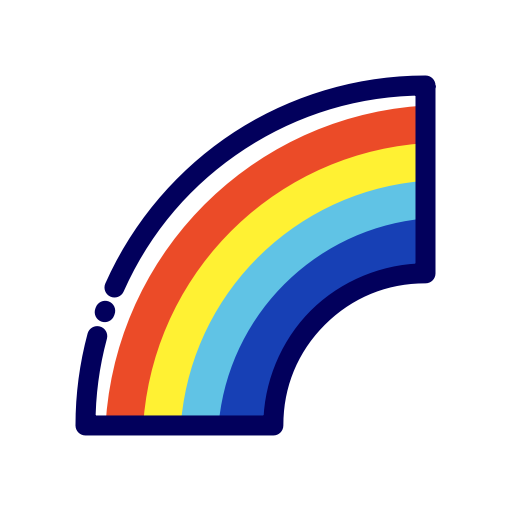知识篇 -- CSS定位:掌控元素在页面中的位置
CSS的 position 属性是控制元素在网页中精确位置的关键。它允许我们将元素从正常的文档流中“取出”,并根据不同的定位方式来放置它们。理解 position 属性的不同值及其相互作用,是实现复杂布局和交互效果的基础。
# 一、position 属性的五种主要值
# 1. static (静态定位)
- 特点:
- 默认值:所有HTML元素的默认定位方式。
- 遵循文档流:元素按照HTML文档的正常顺序进行布局。
top,right,bottom,left,z-index无效:这些偏移属性对静态定位的元素不起作用。
- 何时使用:当您不需要对元素进行特殊定位,希望它自然地融入文档流时。
- 示例:效果:两个元素会上下排列,各自占据一行。
<div style="background-color: lightblue; padding: 10px;">这是一个静态定位的div。</div> <p style="background-color: lightcoral; padding: 10px;">这是一个静态定位的p。</p>
# 2. relative (相对定位)
- 特点:
- 相对于自身定位:元素相对于其在正常文档流中的原始位置进行偏移。
- 保留空间:即使元素偏移了,它在文档流中占据的空间仍然保留,不会影响其他元素的布局。
top,right,bottom,left,z-index有效:这些偏移属性会使元素从其原始位置移动。
- 何时使用:
- 微调元素位置,而不影响周围元素。
- 作为
absolute定位元素的包含块(containing block)。
- 示例:效果:
<div style="background-color: lightblue; padding: 10px; position: relative; left: 20px; top: 10px;"> 这个div相对自身位置向右偏移20px,向下偏移10px。 </div> <p style="background-color: lightcoral; padding: 10px;">这个p元素的位置不受上面div偏移的影响。</p>div会向右下角偏移,但p元素仍然在div原始位置的下方。
# 3. absolute (绝对定位)
- 特点:
- 脱离文档流:元素会从正常的文档流中完全移除,不再占据空间。
- 相对于最近的已定位祖先元素定位:元素会相对于其最近的
position属性为relative,absolute,fixed或sticky的祖先元素进行定位。如果没有这样的祖先元素,则相对于初始包含块(通常是<html>元素)定位。 top,right,bottom,left,z-index有效:这些偏移属性决定了元素相对于其包含块的位置。
- 何时使用:
- 创建浮动面板、模态框、工具提示等。
- 将元素精确放置在页面的特定位置。
- 示例:效果:
<div style="background-color: lightgray; padding: 20px; position: relative; width: 300px; height: 150px;"> 这是一个相对定位的父容器。 <span style="background-color: lightgreen; padding: 5px; position: absolute; top: 10px; right: 10px;"> 这个span绝对定位在父容器的右上角。 </span> </div> <p style="background-color: lightcoral; padding: 10px;">这个p元素会紧跟在父容器后面,因为span脱离了文档流。</p>span会精确地定位在div容器的右上角,而p元素会忽略span的存在,紧跟在div后面。
# 4. fixed (固定定位)
- 特点:
- 脱离文档流:与
absolute类似,元素会从正常的文档流中移除。 - 相对于视口定位:元素会相对于浏览器视口(viewport)进行定位,即使页面滚动,它也会保持在屏幕上的固定位置。
top,right,bottom,left,z-index有效。
- 脱离文档流:与
- 何时使用:
- 创建固定导航栏、返回顶部按钮、广告条等。
- 示例:效果:导航栏会始终固定在浏览器窗口的顶部,不随页面滚动而移动。
<div style="background-color: #333; color: white; padding: 10px; position: fixed; top: 0; width: 100%; text-align: center;"> 这是一个固定在顶部的导航栏。 </div> <div style="height: 1000px; background-color: #f0f0f0; padding-top: 50px;"> 页面内容很长,可以滚动。 </div>
# 5. sticky (粘性定位)
- 特点:
- 混合模式:元素在跨越特定阈值前是相对定位,之后变为固定定位。
- 遵循文档流:在未达到阈值前,元素仍然在文档流中占据空间。
top,right,bottom,left属性是激活粘性定位的必要条件。
- 何时使用:
- 创建滚动时固定在顶部的标题、侧边栏等。
- 示例:效果:当页面滚动到蓝色
<div style="height: 200px; background-color: #eee;">滚动区域上方内容</div> <div style="background-color: lightblue; padding: 10px; position: sticky; top: 0;"> 这个元素会在滚动到顶部时粘住。 </div> <div style="height: 800px; background-color: #f0f0f0;">滚动区域下方内容</div>div顶部与视口顶部重合时,该div会固定在顶部,直到其父元素滚动出视口。
# 二、z-index 属性:控制元素的堆叠顺序
当多个定位元素(非 static 定位)发生重叠时,z-index 属性决定了它们在垂直方向上的堆叠顺序。
- 值:可以是正整数、负整数或
auto。数值越大,元素越靠上。 - 作用条件:
z-index只对position属性值为relative,absolute,fixed,sticky的元素有效。 - 堆叠上下文 (Stacking Context):
z-index的作用范围受限于其所在的堆叠上下文。一个堆叠上下文由根元素 (<html>) 或position值为非static且z-index值为非auto的元素创建。
示例:
<div style="position: relative; width: 200px; height: 200px; background-color: red; z-index: 1;">
红色盒子 (z-index: 1)
<div style="position: absolute; top: 50px; left: 50px; width: 100px; height: 100px; background-color: blue; z-index: 2;">
蓝色盒子 (z-index: 2)
</div>
</div>
<div style="position: relative; top: -100px; left: 100px; width: 200px; height: 200px; background-color: green; z-index: 0;">
绿色盒子 (z-index: 0)
</div>
效果:蓝色盒子在红色盒子之上,红色盒子在绿色盒子之上。
理解CSS定位是构建复杂、交互式网页布局的关键。通过灵活运用 position 和 z-index,可以精确控制元素的视觉呈现和堆叠关系。

